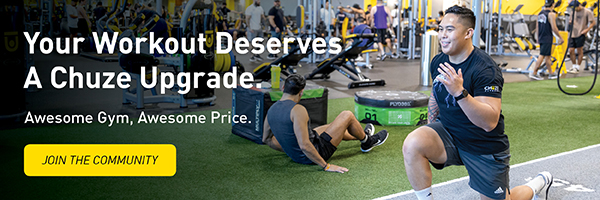The dumbbell biceps curl is a simple, accessible exercise that focuses on strengthening the muscles in the front of the upper arm. It requires only a pair of dumbbells and a small amount of space, which makes it a useful option whether you train at a gym or at home.
Since it directly targets the biceps while also engaging the forearms and grip, the dumbbell biceps curl is a reliable choice for anyone looking to improve arm strength or definition. The movement is easy to learn, and with the right technique, you can build muscle, increase endurance, and support functional strength for everyday tasks.
Read on to learn more about proper curl technique, tips for beginners, common mistakes to avoid, and variations to keep your training effective and interesting.
How to Do Dumbbell Biceps Curls Correctly
Although the dumbbell biceps curl is a relatively simple exercise, using the right technique makes all the difference.
Here’s how to perform the dumbbell biceps curl with proper form:
- Set your stance – Stand with your feet shoulder-width apart. Keep your knees slightly soft (not locked out) to maintain balance.
- Hold the dumbbells — Position a dumbbell in each hand with your arms fully extended at your sides. Your palms should face forward, and your shoulders should remain relaxed.
- Brace your core – Lightly engage your abs to stabilize your spine. Keep your chest tall and avoid leaning back.
- Begin the curl – Exhale as you bend your elbows and bring the dumbbells upward. Keep your upper arms still so only the forearms move.
- Reach the top – Stop when the dumbbells are near shoulder level. Pause and squeeze your biceps for a second.
- Lower with control – Inhale as you extend your elbows and slowly return the dumbbells to the starting position.
- Repeat – Perform the number of reps you’ve planned, making sure every repetition looks the same.
Pro tip: If you feel your shoulders or lower back helping, it means your weight is too heavy. Drop to a lighter dumbbell so the biceps stay in charge of the movement.
What Muscles do Dumbbell Biceps Curls Target?
Dumbbell curls primarily target the biceps brachii, which is made up of two heads (the short head and the long head). Together, they allow you to flex your elbow and rotate your forearm.
But several other muscles contribute to the movement as well:
- Brachialis – Located beneath the biceps brachii, this muscle helps flex the elbow and adds thickness to the arm.
- Brachioradialis – This is a key forearm muscle that assists with elbow flexion and supports grip strength.
- Forearm flexors and extensors – These are smaller muscles in the forearm that engage to stabilize the wrist during the curl.
- Core stabilizers – Your abs and lower back work isometrically to keep your torso upright.
Because these muscles work together, curls do more than build stronger arms. They also contribute to better grip endurance and stability in everyday life.
Tips for Beginners
Starting with dumbbell biceps curls doesn’t have to feel intimidating. Here are a few tips to help you get comfortable and confident:
- Choose a manageable weight – Begin with lighter dumbbells—anywhere from 5-12 pounds is a good range for many beginners. The goal is to move through each rep with control, not to lift the heaviest weight possible.
- Try alternating curls – If curling both arms at once feels unsteady, work one arm at a time. This lets you focus on form and helps correct imbalances between sides.
- Slow your tempo – Count to three as you lower the dumbbells. The downward phase (eccentric movement) is just as important as the lift.
- Check your posture – Stand tall with your shoulders relaxed and avoid hunching forward. Good posture makes curls safer and more effective.
These small adjustments can set the stage for long-term progress without unnecessary strain or frustration.
Common Mistakes to Avoid
Even though curls are relatively simple, it’s easy to slip into bad habits. Watch out for these common mistakes:
- Swinging the weights – Using momentum shifts effort away from the biceps. If you find yourself swinging, reduce the load and slow down.
- Moving the elbows forward – Your elbows should stay tucked close to your torso. When they drift forward, the shoulders take over the work.
- Incomplete range of motion – Lowering only partway down or skipping the squeeze at the top reduces effectiveness. Aim for full extension and contraction.
- Arching the back – If your lower back is arching, it’s a sign that the weight is too heavy. Reduce your weight, brace your core, and focus on form.
- Rushing reps – Performing curls quickly decreases time under tension, which limits muscle growth. Controlled reps are more effective.
Correcting these mistakes not only helps you see results faster but also minimizes your risk of injury.
Is a 20-Pound Dumbbell Curl Good?
The question of whether 20-pound curls are “good” depends entirely on the individual. For many beginners, curling 20 pounds per hand with strict form is a significant challenge. Others may find that starting with 8-15 pounds is more realistic while learning the technique. For experienced lifters, 20 pounds might be a warm-up weight or part of a higher-rep endurance set.
What matters most is not the number on the dumbbell but whether you can complete reps with good posture, a controlled tempo, and without using momentum.
Remember: Progress in strength training is personal. Rather than comparing numbers, focus on steady improvements over time.
What Are 7-7-7 Biceps Curls?
The 7-7-7 method, often called “21s,” is a popular curl variation that challenges your biceps in three distinct ranges of motion.
- 7 reps from the bottom to halfway up – This emphasizes the initial stretch of the biceps.
- 7 reps from halfway up to the top – This builds strength at the peak contraction.
- 7 full-range reps – This exhausts the muscle through the entire movement.
By combining partial and full reps, 21s increase time under tension and create an intense muscle pump. They’re best added as a finisher to your biceps workout once you’re comfortable with standard curls.
Variations of Dumbbell Biceps Curls
Changing up your curl routine helps keep your training fresh by targeting the muscles from slightly different angles. Here are some effective variations:
- Hammer curls – Use a neutral grip (palms facing each other) to emphasize the brachialis and forearms. This move not only adds thickness to your arms but also improves grip strength, which carries over to other lifts.
- Incline curls – Perform curls while lying on an incline bench to stretch the biceps and hit the long head more effectively. The deeper stretch at the bottom of the movement helps you build strength through a larger range of motion.
- Concentration curls – Sit on a bench, brace your elbow against your thigh, and curl one dumbbell at a time for strict form. This variation eliminates momentum, forcing your biceps to handle all the work and boosting the mind-muscle connection.
- Zottman curls – Curl up with palms facing forward, then rotate your wrists so palms face down as you lower the weight. This combines biceps and forearm training in a single move, making it efficient for building both strength and endurance.
- Reverse curls – Flip your grip to palms down to shift focus onto the forearms while still working the biceps. This is a great accessory lift to balance out arm training and improve overall forearm development.
How to Add Dumbbell Biceps Curls Into Your Routine
Curls fit easily into many different workout styles. Here are a few options:
- Upper body days – Pair curls with chest presses, rows, or shoulder exercises for a balanced workout.
- Arm-focused sessions – Combine curls with triceps moves like dips or extensions for a complete arm routine.
- Full-body training – Use curls as accessory work after compound lifts such as squats, deadlifts, or pull-ups.
- Circuit training – Add curls to a circuit with push-ups, lunges, and planks for a functional workout.
Most people benefit from 2-3 sets of 10-15 reps, but you can adjust your weight and rep range depending on your goals. This means heavier weights and lower reps for strength, or lighter weights and higher reps for endurance and definition.
Benefits of Dumbbell Biceps Curls
Why include curls in your training? There are plenty of clear benefits:
- Targeted arm strength – Curls directly isolate the biceps, making them an effective choice for building arm strength.
- Improved endurance – Stronger arms make daily tasks like carrying bags or lifting objects less tiring.
- Balanced aesthetics – Well-developed biceps create proportion with the triceps and shoulders.
- Minimal equipment – All you need is a pair of dumbbells and a small space.
- Easy progression – You can increase weight, reps, or tempo to challenge yourself over time.
These benefits explain why curls remain a go-to exercise for many people across fitness levels.
Build Stronger Arms with Chuze Fitness
Dumbbell biceps curls are a straightforward yet effective exercise that can help you build strength and improve endurance. By practicing good form, avoiding common mistakes, and mixing in variations, you’ll create a routine that supports both functional fitness and aesthetic goals.
At Chuze Fitness, we believe that strength training should feel approachable and empowering. Whether you’re just learning how to curl a pair of dumbbells or you’re refining your technique after years of training, our supportive community and expert resources are here to help.
Pair your curls with other strength moves, join one of our group classes, or use our on-demand workouts to keep your training consistent and motivating. Whenever you’re ready, grab your dumbbells and let every curl bring you closer to stronger, more capable arms.
Sources:
Healthline. Eccentric Training Offers Big Bang for Your Strength Training Buck. https://www.healthline.com/health/fitness/eccentric-training
Physiopedia. Brachialis. https://www.physio-pedia.com/Brachialis
Physiopedia. Brachiordialis. https://www.physio-pedia.com/Brachioradialis
ScienceDirect. Biceps Brachii Muscle. https://www.sciencedirect.com/topics/medicine-and-dentistry/biceps-brachii-muscle
Teach Me Anatomy. Muscles of the Anterior Forearm. https://teachmeanatomy.info/upper-limb/muscles/anterior-forearm/
 Reviewed By:
Reviewed By:
Ani is the Vice President of Fitness at Chuze Fitness and oversees the group fitness and team training departments. She’s had a 25+ year career in club management, personal training, group exercise and instructor training. Ani lives with her husband and son in San Diego, CA and loves hot yoga, snowboarding and all things wellness.



